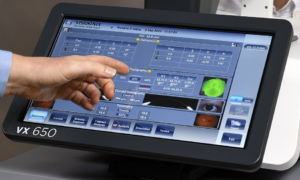Sponsored Content
Jan. 3, 2018
Explore New Areas of Opportunity
Optometry’s scope is expanding
As eyecare expands and optometric scope increases, there are more opportunities for eyecare professionals to expand into relevant and profitable areas. There is increasing recognition that the medical and refractive needs of patients overlap. A patient with dry eye will not be a great contact lens candidate unless the symptoms of dry eye are resolved. A patient with a family history of glaucoma, diabetes or age-related macular degeneration may warrant additional testing and watching as the years go on. Ocular disease management is becoming a common facet of many primary care optometric practices.
A young patient with rapidly advancing myopia could be a great candidate for orthokeratology, as additional patients with myriad conditions could benefit from other kinds of specialty contact lenses. Young students who are under-performing in school, athletes, or those who have had an accident, could benefit from some type of vision therapy.
These are all services that fall in the wheelhouse of eyecare providers today—and they expand the potential for patient satisfaction and a more comprehensive relationship between patient and provider.
These areas also represent new profit areas for eyecare practices. However, many of these services are not covered by vision benefits, or even medical insurance benefits. There’s no question that they can be valuable to the patient, so the challenge is not only to provide these services, but also to make them accessible.
CareCredit can help. Practitioners who accept CareCredit credit cards can offer patients an option through which they can get special financing to be able to say yes to the products and services they need. That’s good for everyone involved.
Medical Eyecare Growing
Medical eyecare services are expected to increase nearly three times as fast as comprehensive exams through 2025, says Richard Edlow, OD, of Catonsville Eye Group in Catonsville, Md. Dr. Edlow, an “eyeconomist,” tracks the growth of medical eyecare. The percentage of comprehensive eye exams is expected to increase at about 1 percent annually, while the percentage of medical eyecare services is expected to grow at an annual rate of about 2.8 percent between now and 2025.
“The annual revenue impact of medical eyecare growth will be greater than these numbers suggest,” he says.“The rapid growth in demand for medical eyecare relates to the aging of the population, but also to the growing diagnoses and treatment of prevalent ocular conditions, such as dry eye and ocular allergies, and expanded use of diagnostic tests, such as retinal scans and OCT.”
This is an important development for medically oriented ODs, Edlow says. “With the medical eyecare growth in the 65-and-older [Medicare] population, and with a flat labor supply for ophthalmology, it is a great opportunity.” >>READ MORE>>




























